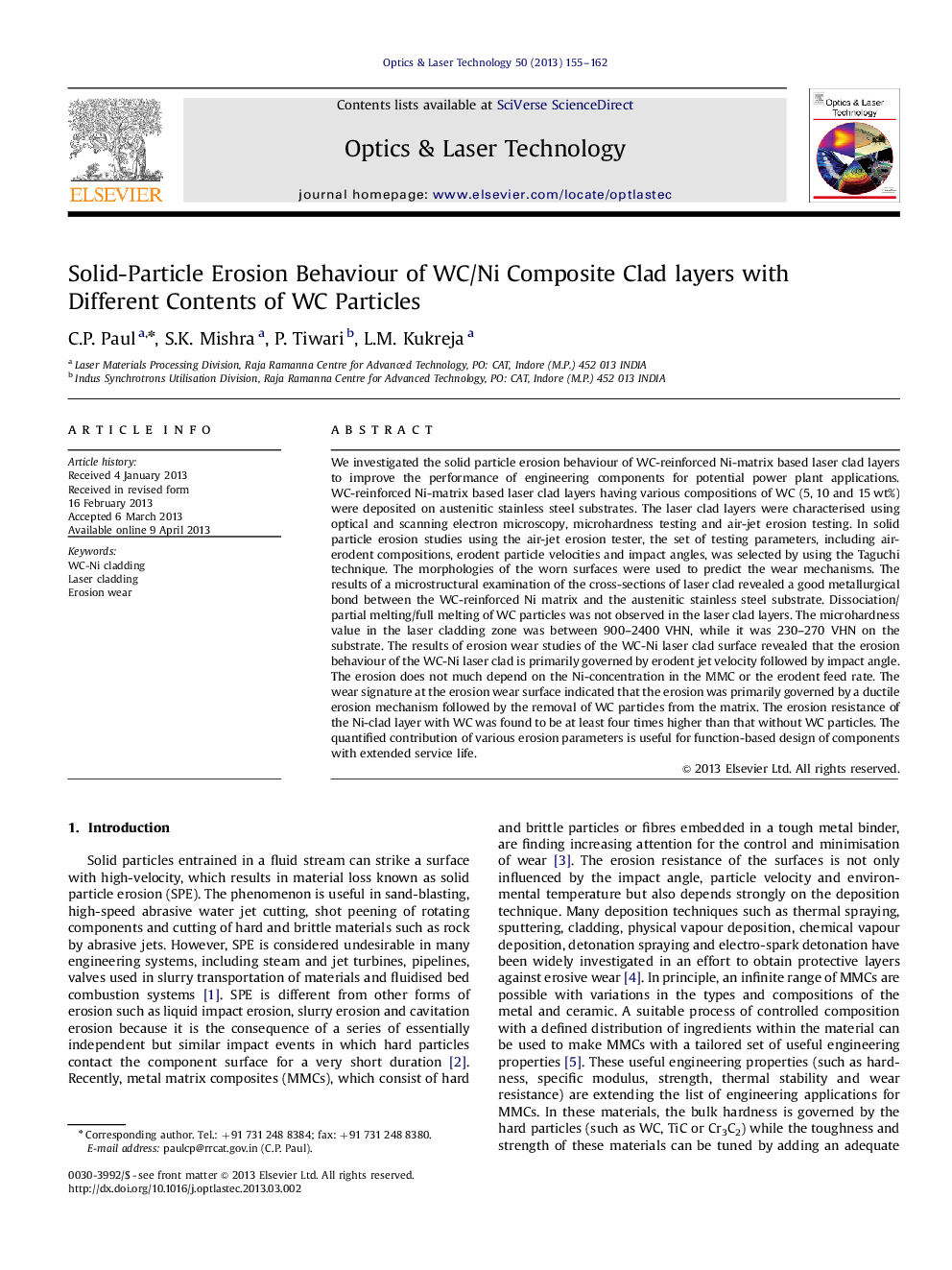| کد مقاله | کد نشریه | سال انتشار | مقاله انگلیسی | نسخه تمام متن |
|---|---|---|---|---|
| 732335 | 1461648 | 2013 | 8 صفحه PDF | دانلود رایگان |

• Laser cladding of WC reinforced matrices with 5, 10 and 15 wt% of Ni on SS.
• No dissociation/partial melting/full melting of WC particles in the Ni-matrix.
• Dendritic microstructure in Ni matrix with radial orientation towards WC particles.
• Erosion of WC-Ni clad governed by erodent jet velocity, followed by impact angle.
• Erosion in ductile mechanism followed of the removal of WC from the matrix.
We investigated the solid particle erosion behaviour of WC-reinforced Ni-matrix based laser clad layers to improve the performance of engineering components for potential power plant applications. WC-reinforced Ni-matrix based laser clad layers having various compositions of WC (5, 10 and 15 wt%) were deposited on austenitic stainless steel substrates. The laser clad layers were characterised using optical and scanning electron microscopy, microhardness testing and air-jet erosion testing. In solid particle erosion studies using the air-jet erosion tester, the set of testing parameters, including air-erodent compositions, erodent particle velocities and impact angles, was selected by using the Taguchi technique. The morphologies of the worn surfaces were used to predict the wear mechanisms. The results of a microstructural examination of the cross-sections of laser clad revealed a good metallurgical bond between the WC-reinforced Ni matrix and the austenitic stainless steel substrate. Dissociation/partial melting/full melting of WC particles was not observed in the laser clad layers. The microhardness value in the laser cladding zone was between 900–2400 VHN, while it was 230–270 VHN on the substrate. The results of erosion wear studies of the WC-Ni laser clad surface revealed that the erosion behaviour of the WC-Ni laser clad is primarily governed by erodent jet velocity followed by impact angle. The erosion does not much depend on the Ni-concentration in the MMC or the erodent feed rate. The wear signature at the erosion wear surface indicated that the erosion was primarily governed by a ductile erosion mechanism followed by the removal of WC particles from the matrix. The erosion resistance of the Ni-clad layer with WC was found to be at least four times higher than that without WC particles. The quantified contribution of various erosion parameters is useful for function-based design of components with extended service life.
Journal: Optics & Laser Technology - Volume 50, September 2013, Pages 155–162